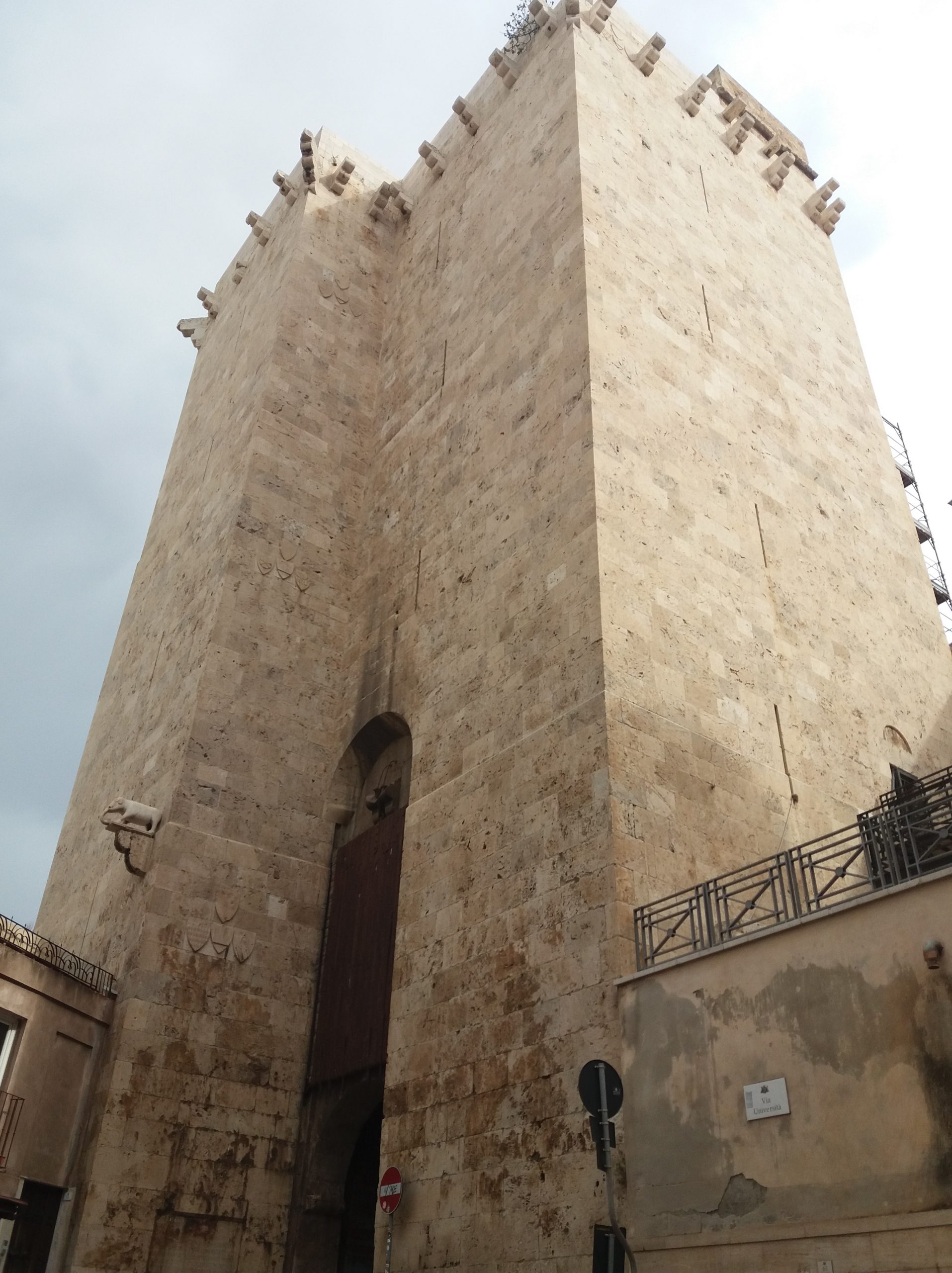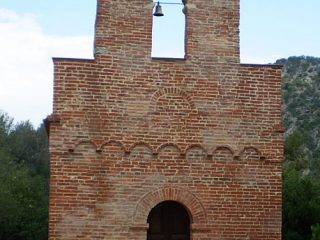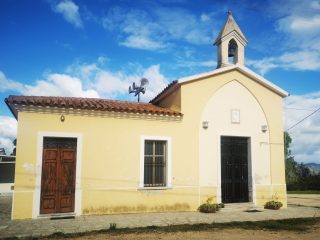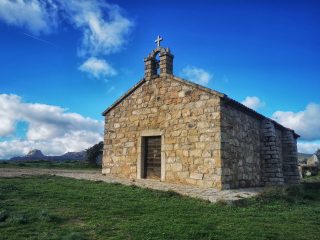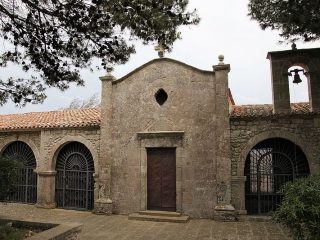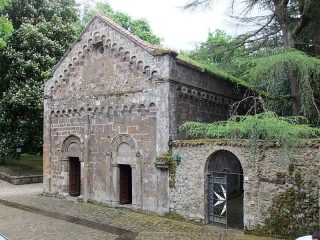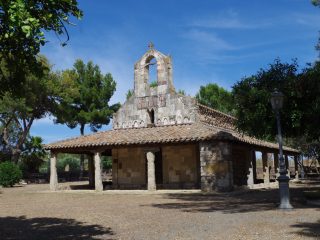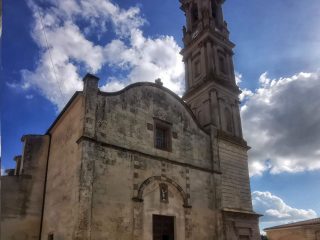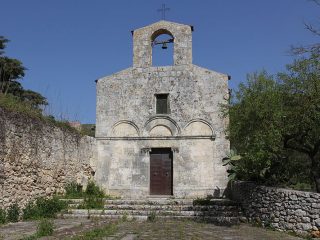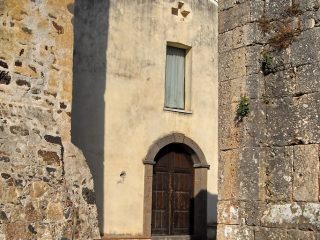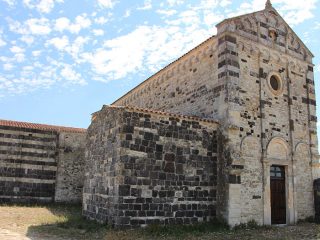Built in 1307 under the domination of the House of Pisa, the tower acted as an entranceway to Castello and as a defensive stronghold; standing 30 metres high, it provides an excellent view of the city below.
An inscription marks its construction on the wishes of the Pisan consuls, Giovanni De Vecchi and Giovanni Cinquini. The city’s coat of arms can be found on the side facade and, on a ledge, one of the symbols used by Pisa: the sculpture of an elephant, hence the tower’s name.
The three-sided square-shaped tower, with matrix features of Pisan military architecture was built using strong stone on the three external sides, extracted from Bonaria, leaving the side facing Castello exposed.
The tower has heavy doorways and portcullises, and is split into floors by wooden mezzanines, while ledges supported the framework aimed at providing defence. The Aragonese dominion used the fortification as a prison.
The buildings and public works backed against the defensive stronghold were removed during restoration work in 1906 carried out by the engineer Dionigi Scano.


